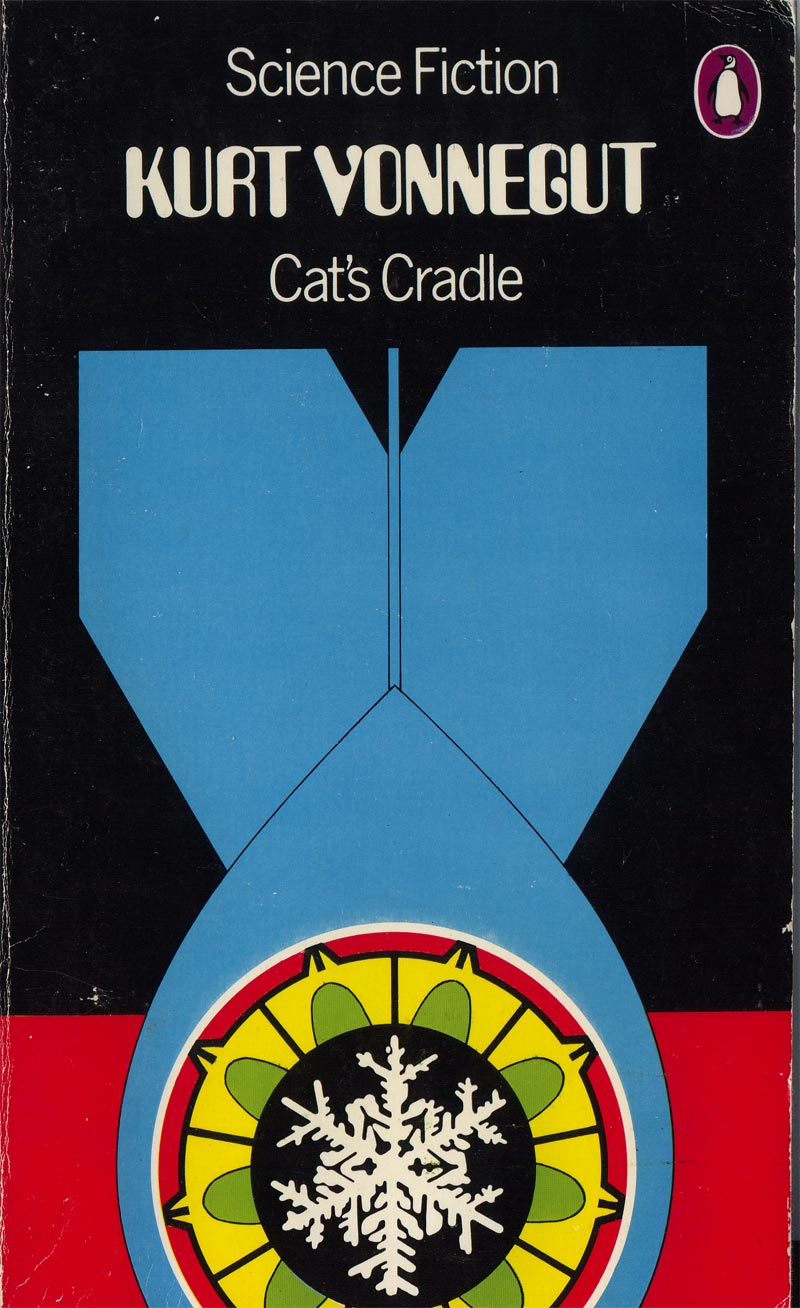We jump ahead a full decade from 1969's Slaughterhouse-Five to 1979's Jailbird. Why? Well, as we've discussed several times in class, after the disheartening lean years leading up to Slaughterhouse-Five, Vonnegut had a very difficult time dealing with his success, fan's expectations of him and his desires to remain financially solvent (along with the dissolution of his marriage to Jane Marie Cox and his son Mark's institutionalization). In essence, the author lost touch with himself and his talents, transforming himself into a popular persona à la Mark Twain that was a mere caricature of his former self (to get some sense of this change, along with some of the hypocrisies of this new self, you can read this excerpt from Charles Shields' excellent KV bio from the bottom of pg. 297 to 301). As a result, he followed the critical and popular success of Slaughterhouse-Five with two of his most poorly-received novels: Breakfast of Champions, or Goodbye Blue Monday (1973) and Slapstick, or Lonesome No More! (1976).
During this same time, America was undergoing its own identity crisis as the hopeful politics of the 1960s dissolved into hopeless malaise as the 70s unfolded. The abrupt shocks that destroyed this optimism (cf. Vonnegut's inclusion of Robert Kennedy and Martin Luther King's assassinations in the final chapter of Slaughterhouse-Five), were joined by the long quagmire of the war in Vietnam and fresh wounds inflicted by the Watergate scandal.Taken together, these internal and external dilemmas form the context for Jailbird, wherein Vonnegut, approaching his sixtieth birthday, seeks answers in the lessons and convictions of his past. Walter F. Starbuck, the novel's protagonist, who's just been released from prison after serving time for minor crimes as part of Watergate, finds himself in the exact same situation, and his (and Vonnegut's) retrospective soul-searching will cross paths with a veritable pantheon of secular American saints cut from the same cloth as Eliot Rosewater, including Eugene V. Debs, Powers Hapgood, Sacco and Vanzetti, and others.
In a 2003 interview with David Barsamian in The Progressive, Vonnegut talks about the strange interplay of socialism and Christianity within his ethics, mentioning some of the historic figures who factor positively into Jailbird:
Vonnegut: It’s perfectly ordinary to be a socialist. It’s perfectly normal to be in favor of fire departments. There was a time when I could vote for economic justice, and I can’t anymore. I cast my first vote for a socialist candidate—Norman Thomas, a Christian minister. I had to cast it by absentee ballot. I used to have three socialist parties to choose from—the Socialist Labor Party, Socialist Workers Party, and I forgot what the other one was.
Q: You take pride in being from Indiana, in being a Hoosier.
Vonnegut: For being from the state that gave us Eugene Debs.
Q: Eugene Debs of Terre Haute on the Wabash.
Vonnegut: Where Timothy McVeigh was executed. Eugene Debs said (and this is merely a paraphrase of the Sermon on the Mount, which is what so much socialist writing is), “As long as there’s a lower class, I’m in it; as long as there’s a criminal element, I’m of it; as long as there is a soul in prison,” which would include Timothy McVeigh, “I am not free.” What is wrong with that? Of course, Jesus got crucified for saying the same thing.
Q: With two million souls in prison today in the United States, Debs would be very busy.
Vonnegut: Debs would’ve committed suicide, feeling there was nothing he could do about it.
Q: There is another Hoosier you write about who is unknown, Powers Hapgood of Indianapolis. Who was he?
Vonnegut: Powers Hapgood was a rich kid. His family owned a successful cannery in Indianapolis. Powers was radicalized. After he graduated from Harvard, he went to work in a coal mine to find out what that was like. He became a labor organizer. He led the pickets against the execution of Sacco and Vanzetti. I got to know him late in his life when he’d become a local CIO official. There was some sort of dustup on a picket line, enough to bring the cops into play. Hapgood was testifying in court about what was to be done about CIO members who had made trouble. The judge stopped the proceedings at one point and said, “Hapgood, why would a man with your advantages, from a wealthy, respected family, Harvard graduate, lead such a life?” Powers Hapgood replied, “Why, the Sermon on the Mount, sir.” Not bad, huh?
While we're on the topic of Vonnegut's moralists, it's worth noting that good old Kilgore Trout appears in Jailbird as well, however in very different circumstances that we have (or will) see him elsewhere. Try not to get too hung up on the differences — not unlike the radical differences between the Diana Moon Glampers you met in God Bless You, Mr. Rosewater and her namesake in "Harrison Bergeron," we can, perhaps, chalk this up to authorial carelessness.
Here's our reading schedule for Jailbird:
- Tues. March 8: prologue–ch. 6
- Thurs. March 10: ch. 7–15
- Tues. March 15: ch. 16–epilogue










